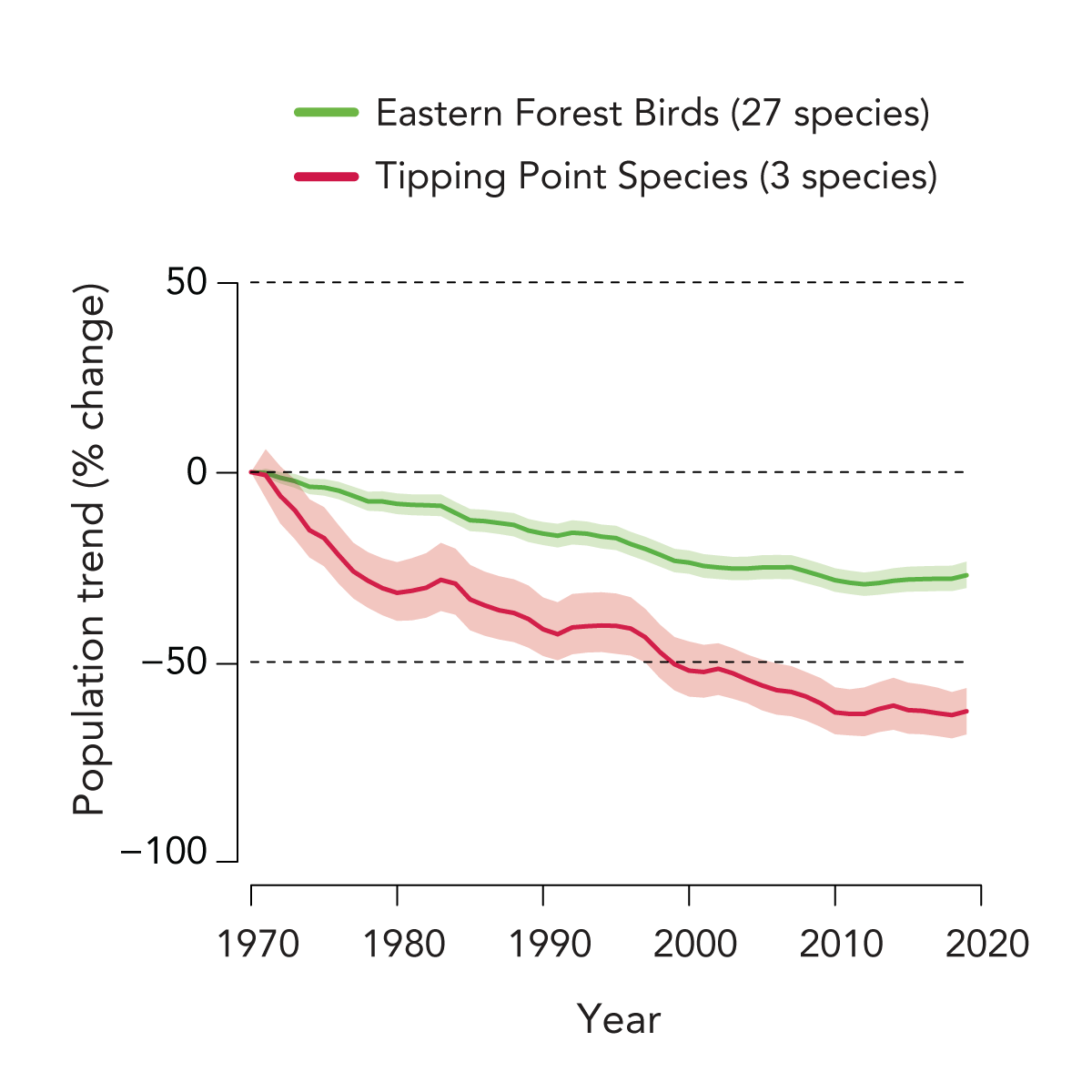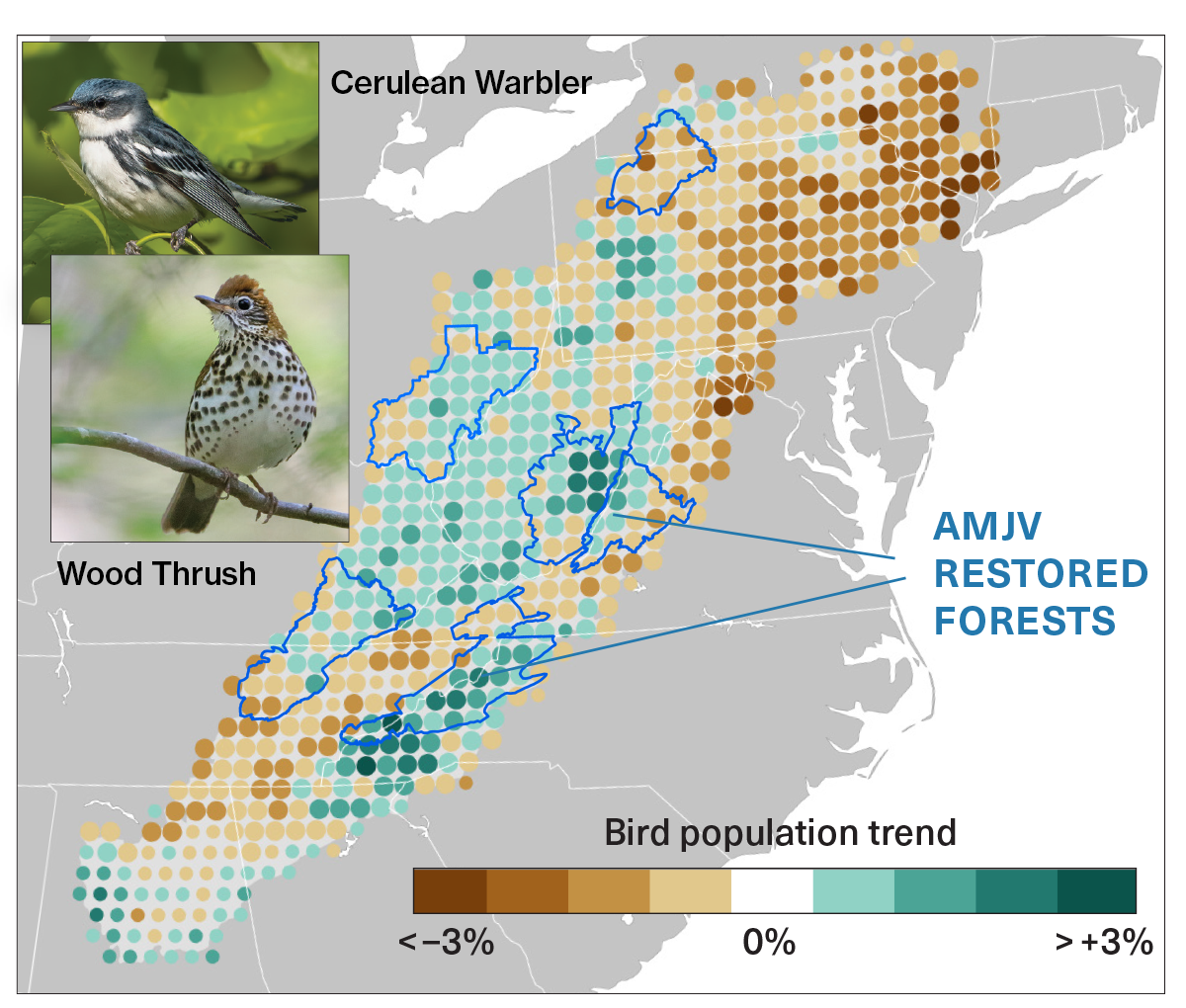Eastern Forest Birds
Partnerships Revitalize Forests and Wildlife
Status: Long-term decline has leveled off

Since 1970 the overall population for eastern forest birds shows almost a 30% loss, but that loss curve has straightened out since 2009. Today some species previously in steep decline—such as Red-cockaded Woodpecker—are showing modest population gains.
- Forest restoration efforts in the East appear to be bending the curve of bird loss. Today the overall population of eastern forest birds is back to where it was in 2010.
- Even the Tipping Point species in this group are showing signs of improvement. Though their population is collectively down by 63%, the rate of loss has slowed considerably in the past decade.
- Joint Ventures led by the U.S. Fish and Wildlife Service and partners have played a crucial role in targeting conservation actions with remarkable results.
Two Birds Making a Comeback

Over the last 50 years and across their ranges, the long-term population trends for Cerulean Warbler and Wood Thrush show declines of about 60%. But within the last decade, both birds are showing signs of stabilization—a lesser decline of about –0.03% per year for Cerulean Warblers and a slight increase of +0.68% per year for Wood Thrush.
The Appalachian Mountains Joint Venture (AMJV)—a partnership of over 50 federal, state, and nonprofit organizations from Alabama and Georgia to New York—is leading the way to bend the loss curve for these declining birds, with forest management projects that restore the age and structural diversity of hardwood forests in the region. Some of the biggest local Cerulean Warbler and Wood Thrush population increases are occurring in AMJV work areas, which also benefit other songbirds and wildlife species as well as overall forest health.
